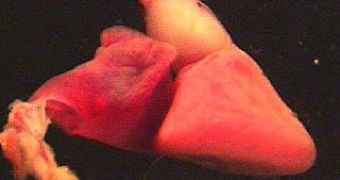Phil Collins was very wrong saying "Two hearts beating just like one".
We do not know how many die annually from a broken heart but at least 600,000 do it because of heart disease. But there are significant sex differences in adult humans regarding the heart's anatomy and functions. Similar differences have also been found in the case of the rainbow trout in a study made by a team of the Department of Biological Sciences, Idaho State University, Pocatello, Idaho. This is the first research depicting sex differences in cardiac performance and metabolism in fishes. The differences were found at a young age. They only develop when the trout heart is contracting.
The team investigated the way two regulatory molecules from the fish heart, citrate acid (an inhibitor of the glucose burning metabolic pathway; this is the only way animals get energy for power) and pyruvate dehydrogenase (PDH) (which intervenes in the oxidation of the glucose) act in both sexes.
Hypothetically, the male hearts should have presented higher citrate levels and the female ones higher PDH. The researchers also looked to see if sodium cyanide (NaCN), an inhibitor of oxidation, drops the glucose burning and cardiac activity in both sexes.
The trout heart is made the epicardium, a layer which, just like the human heart, is oxygenated by the coronary vessels, and the endocardium, which gets oxygen only from the deoxygenated blood returning from the body.
The researchers measured activity in uniform ventricle rings cut from 10-12 month old sexually-immature male and female rainbow trout. They assessed contractile performance (resting tension, twitch force, post-rest potentiation and other variables) under oxygenated and hypotoxic conditions. The researchers found that the ventricle strips had similar rates of oxygen consumption and lactate release (an indicator of oxygen lack, when degradation is made anaerobically) in resting conditions; the inhibiting action of the NaCN was similar in both males and females.
DCA (dichloroacetate, an activator of PDH employed against human heart disease and cancer) induced better performance and reduced lactate release in females. Reoxygenation (following a hypoxic period) led to a rapid and significant improved contraction in males receiving DCA, but not females. The male ventricle tissue contained 2.5 more citrate than in females and the males' epicardium was more developed than that of the females.
Sex differences in cardiac energy metabolism and function discovered in fish could help in the case of human heart diseases by means of sex-specific treatment.

 14 DAY TRIAL //
14 DAY TRIAL //